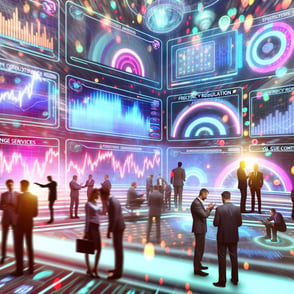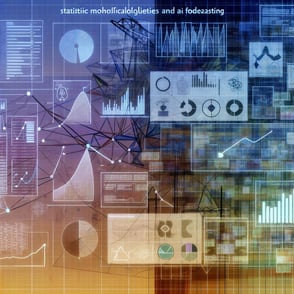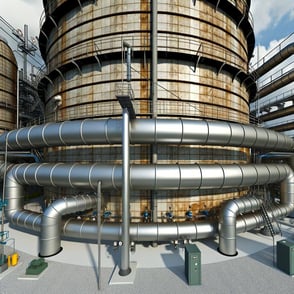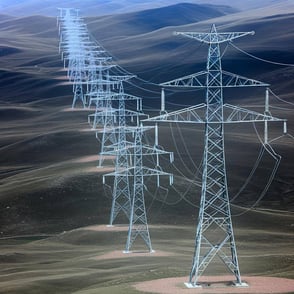Supercapacitor Energy Storage
Supercapacitors, or ultracapacitors, are energy storage devices that offer high power density, rapid charge/discharge, and long cycle life, ideal for quick energy delivery and renewable integration.
What are Supercapacitors?
Supercapacitors, also known as ultracapacitors or electrochemical capacitors, are energy storage devices that combine the properties of traditional capacitors and batteries. They store energy through electrostatic and electrochemical processes, providing high power density, rapid charge and discharge capabilities, and long cycle life. Supercapacitors are distinguished by their ability to deliver quick bursts of power and sustain high cycles of charge and discharge without significant degradation, making them ideal for applications requiring fast energy delivery and high durability.
How Supercapacitor Energy Storage Works
Supercapacitors store energy using a combination of electrostatic and electrochemical processes. They consist of two electrodes immersed in an electrolyte, separated by a porous membrane called a separator. The energy storage mechanism involves the formation of an electric double layer at the interface between the electrode material and the electrolyte.
In supercapacitors, the electrostatic storage mechanism is similar to that of traditional capacitors. When a voltage is applied across the electrodes, positive and negative charges accumulate on the respective electrodes, creating an electric field. This results in the formation of an electric double layer, where ions from the electrolyte adhere to the surface of the electrode material. Additionally, supercapacitors utilize electrochemical storage through pseudocapacitance. This involves reversible redox reactions at the surface of the electrode material, where ions are adsorbed and desorbed, enhancing the overall capacitance and energy storage capacity. To facilitate efficient charge and discharge cycles, supercapacitors employ current collectors. These current collectors, typically made of highly conductive materials like aluminum or copper, are attached to the electrodes. They serve as the interface for electrical connection, ensuring minimal resistance and effective distribution of current across the electrode surface. The current collectors also play a crucial role in maintaining the structural integrity and stability of the electrodes during operation.
.png?width=575&height=321&name=Supercapacitor%20(1).png)
The combination of these two storage mechanisms allows supercapacitors to achieve higher energy densities compared to traditional capacitors, while maintaining the ability to charge and discharge rapidly.
Supercapacitors are classified into three main types based on their electrode materials and storage mechanisms. Electric double-Layer Capacitors (EDLCs) store energy primarily through the formation of an electric double layer. EDLCs use high surface area carbon-based materials, such as activated carbon, to maximize the electrode surface area and enhance capacitance. Pseudocapacitors store energy through both electrostatic and electrochemical processes. They use materials such as metal oxides or conducting polymers, which undergo reversible redox reactions, providing higher energy density compared to EDLCs. Hybrid capacitors combine the properties of EDLCs and pseudocapacitors. They use a combination of carbon-based materials and metal oxides or conducting polymers to achieve a balance between high power density and high energy density.
The Impact of Supercapacitors on the Energy Sector
Supercapacitors have a significant impact on the energy sector by providing efficient and reliable energy storage solutions that enhance power quality, improve energy efficiency, and support renewable energy integration.
They help maintain voltage stability and improve power quality in electrical grids. By providing rapid energy storage and discharge capabilities, they filter out noise, reduce voltage spikes, and enhance the reliability of power supply systems. Supercapacitors also contribute to energy efficiency by providing quick bursts of power and rapid energy storage. This is particularly important in applications requiring high power density and fast response times, such as transportation and industrial systems.
Supercapacitors support the integration of renewable energy sources by smoothing out the intermittent and variable nature of power generation from solar and wind. They provide rapid energy storage and discharge capabilities, ensuring a stable and reliable power supply. Futhermore, the use of supercapacitors in energy storage and power conditioning systems can lead to cost savings by reducing energy losses, improving system efficiency, and extending the lifespan of electrical equipment. The widespread adoption of supercapacitors in various applications also drives technological innovation and economic growth.
Supercapacitors are environmentally friendly, as they do not involve hazardous materials or generate waste. By improving the efficiency and reliability of energy systems, supercapacitors contribute to reducing greenhouse gas emissions and promoting a cleaner energy future.
Conclusion
Supercapacitors are a vital technology in modern energy storage systems. With their ability to store and release energy quickly, supercapacitors play a crucial role in power conditioning, energy efficiency, and the integration of renewable energy sources.
Glossary
- Supercapacitors (Ultracapacitors): Advanced capacitors that combine the properties of traditional capacitors and batteries, providing high power density, rapid charge and discharge capabilities, and long cycle life.
- Electric Double Layer Capacitors (EDLCs): Supercapacitors that store energy primarily through the formation of an electric double layer at the interface between the electrode material and the electrolyte.
- Pseudocapacitors: Supercapacitors that store energy through both electrostatic and electrochemical processes, using materials such as metal oxides or conducting polymers.
- Hybrid Capacitors: Supercapacitors that combine the properties of EDLCs and pseudocapacitors, using a combination of carbon-based materials and metal oxides or conducting polymers.
- Electrostatic Storage: The process of storing energy by accumulating electric charge on conductive plates separated by a dielectric material.
- Electrochemical Storage (Pseudocapacitance): The process of storing energy through reversible redox reactions at the surface of the electrode material.
- Power Conditioning: The process of stabilizing voltage and power flow in electrical systems to improve power quality.
- Regenerative Braking: A system in electric and hybrid vehicles that captures and stores energy during braking and releases it during acceleration to improve efficiency.
- Renewable Energy Integration: The process of incorporating renewable energy sources such as solar and wind power into the energy grid.
- Greenhouse Gas Emissions: Gases released into the atmosphere that contribute to the greenhouse effect and global warming, such as carbon dioxide and methane.
.png?width=200&height=80&name=etpa-logo-color%20(1).png)































.png)
.png)
-1.png?width=250&height=100&name=etpa-logo-color%20(1)-1.png)